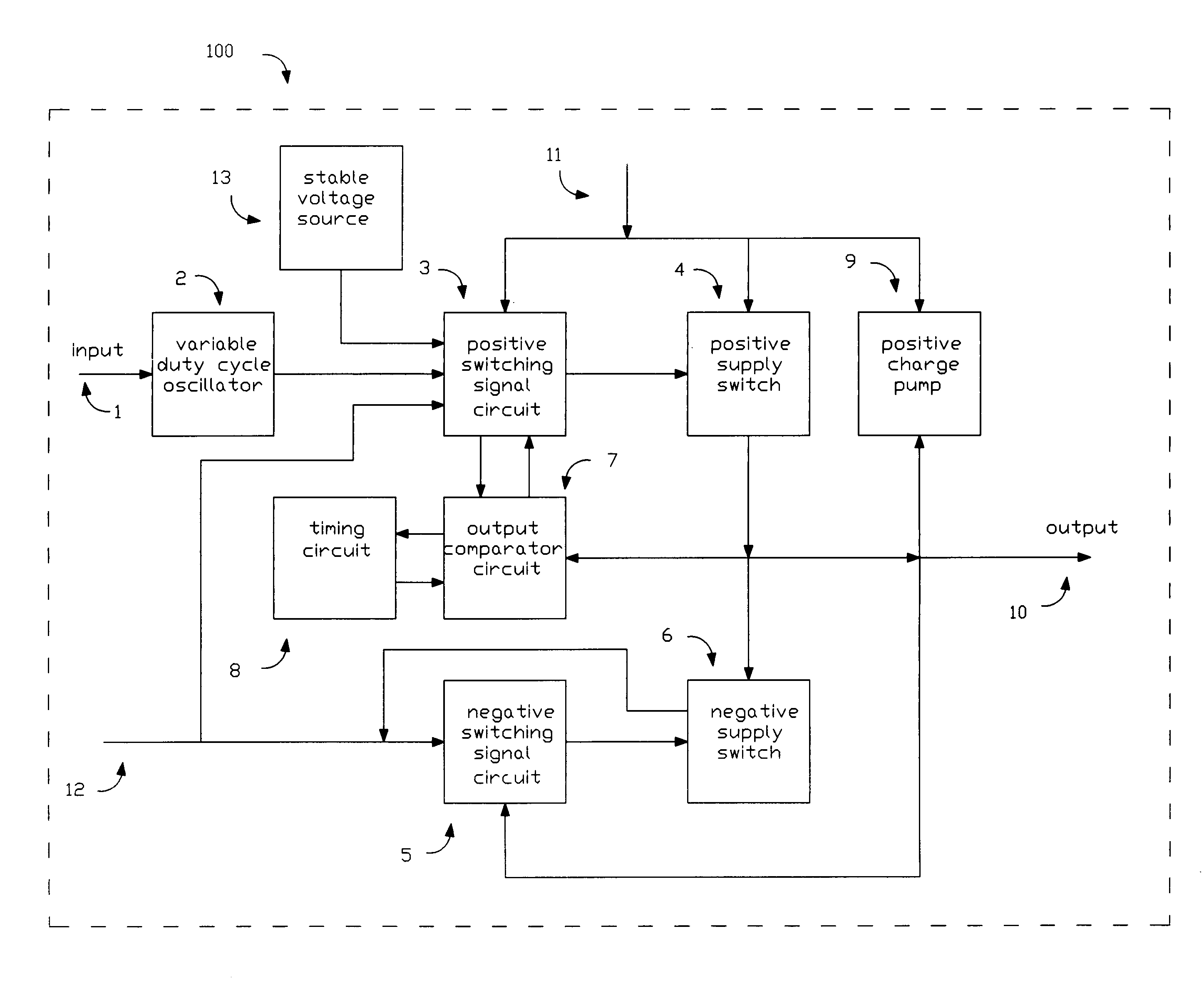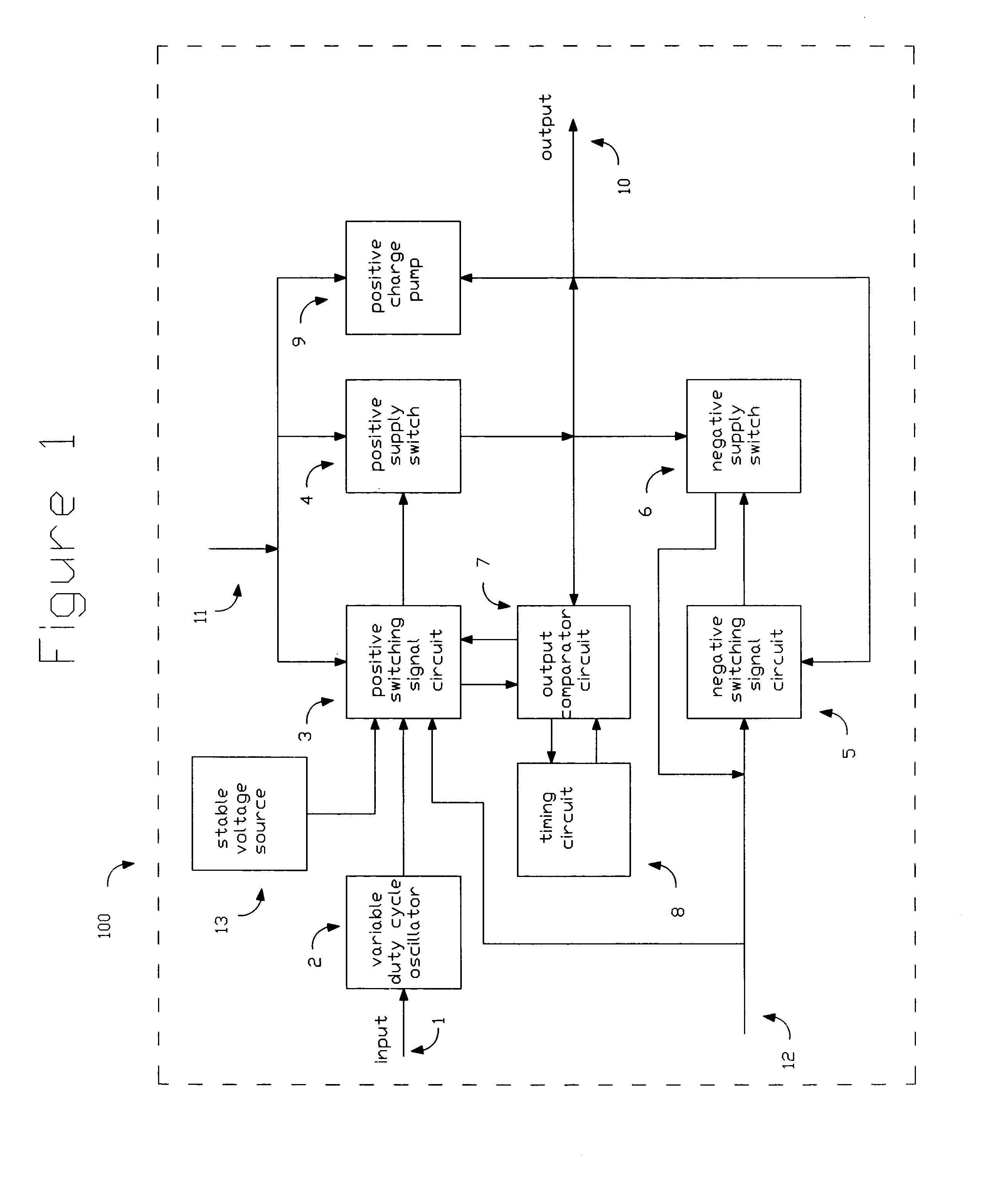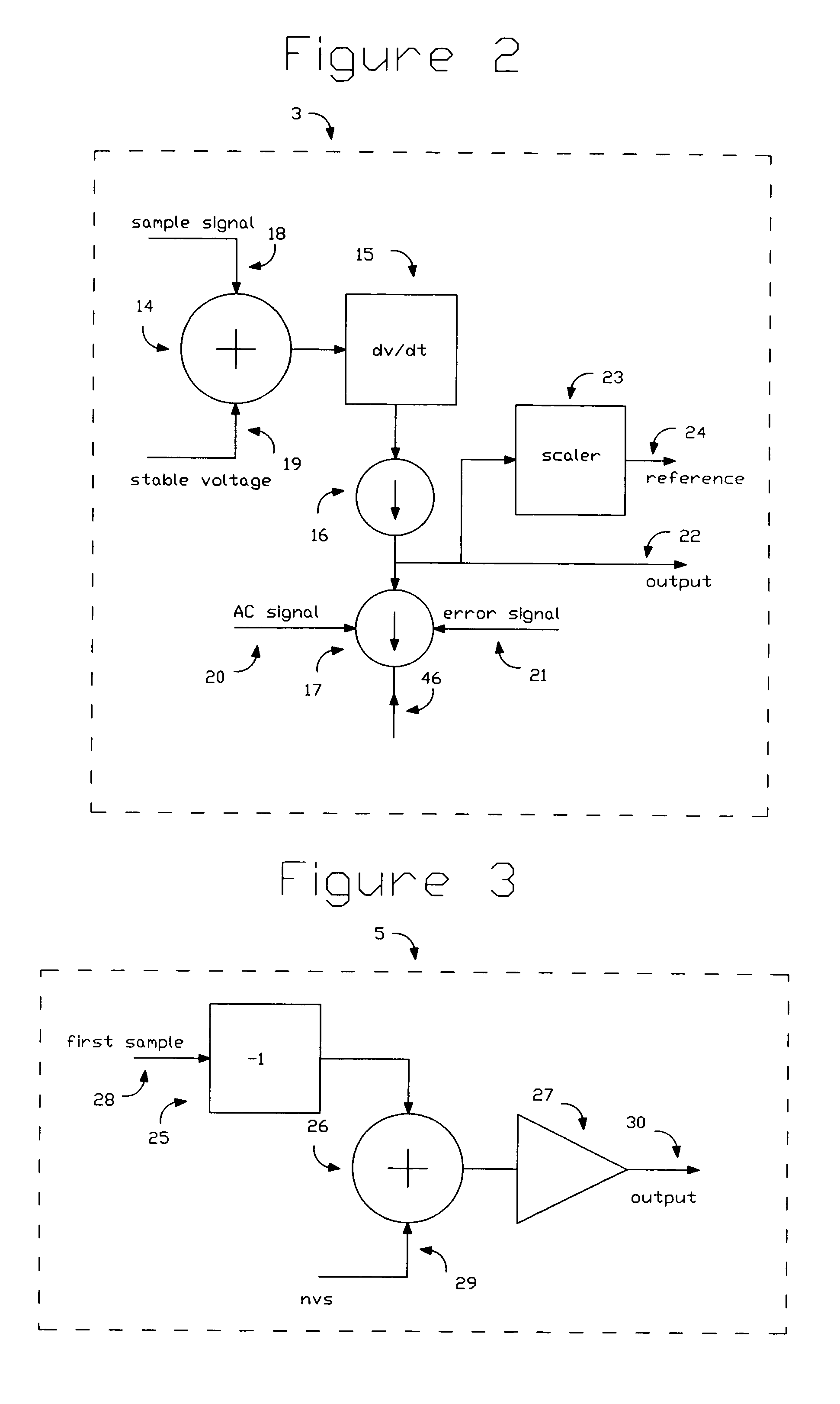Pulse width modulator
a pulse width and modulator technology, applied in the direction of electric motor speed/torque regulation, dynamo-electric converter control, multiple dynamo-motor starters, etc., can solve the problem of unnecessary synchronization with paralleled circuits
- Summary
- Abstract
- Description
- Claims
- Application Information
AI Technical Summary
Benefits of technology
Problems solved by technology
Method used
Image
Examples
Embodiment Construction
[0017]FIG. 1 shows a block diagram of the present embodiment of the invention. In FIG. 1 the pulse width modulator system (100) comprises a signal input port (1) a variable duty cycle oscillator (2) a positive switching signal circuit (3) a positive supply switch (4) a negative switching signal circuit (5) a negative supply switch (6) an output comparator circuit (7) a timing circuit (8), a positive charge pump (9) an output port (10), a positive voltage source input port (11) a negative voltage source input port (12), and a stable voltage source (13).
[0018]The variable duty cycle oscillator (2) provides an alternating current output signal, whereby the alternating current output signal duty cycle is a function of a received input voltage or current at the input signal port (1).
[0019]The positive switching signal circuit (3) receives the alternating current output signal, a first sample signal from the positive voltage source input port (11), a first sample signal from the negative ...
PUM
 Login to View More
Login to View More Abstract
Description
Claims
Application Information
 Login to View More
Login to View More - R&D
- Intellectual Property
- Life Sciences
- Materials
- Tech Scout
- Unparalleled Data Quality
- Higher Quality Content
- 60% Fewer Hallucinations
Browse by: Latest US Patents, China's latest patents, Technical Efficacy Thesaurus, Application Domain, Technology Topic, Popular Technical Reports.
© 2025 PatSnap. All rights reserved.Legal|Privacy policy|Modern Slavery Act Transparency Statement|Sitemap|About US| Contact US: help@patsnap.com



